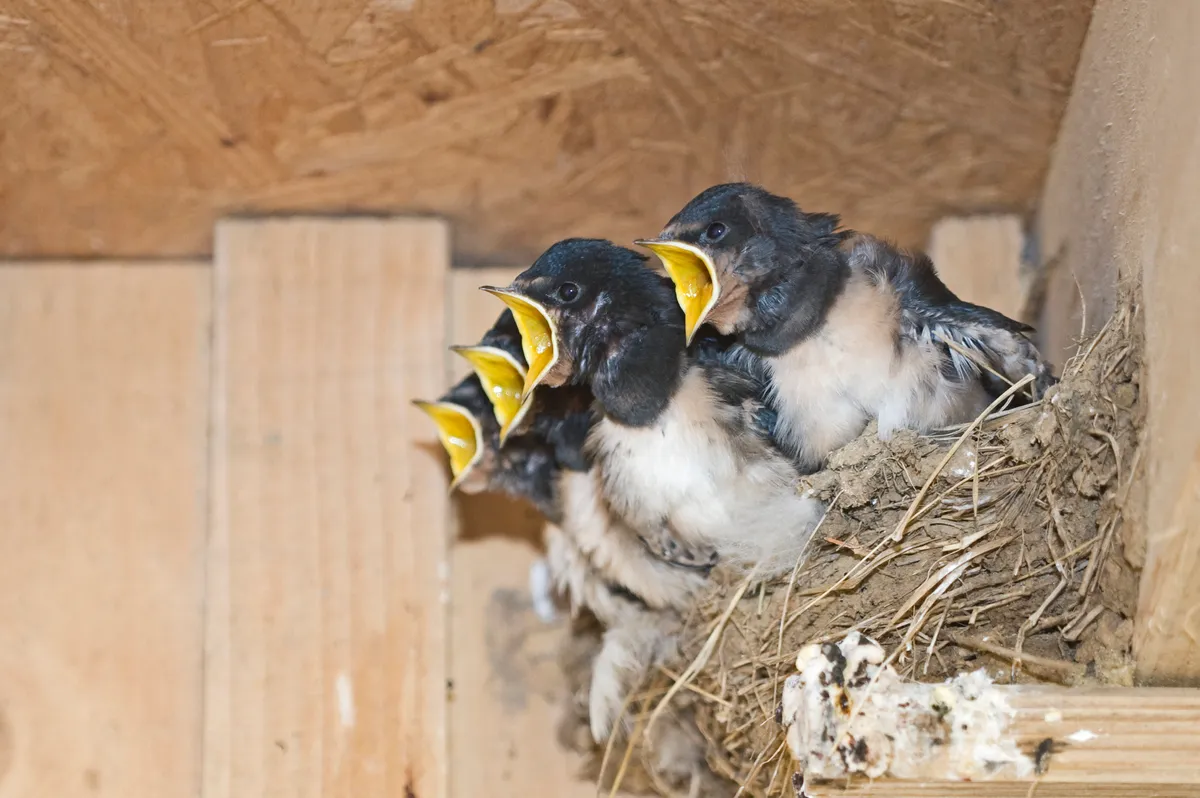Most songbirds use a nest for just a single clutch or season, then build a new one – if they survive to breed again. But one study showed that most swallows returned to the same colony, with 44 per cent of pairs reoccupying the same nest. “This is remarkable given the length of a swallow’s return migration from its wintering grounds in South Africa,” says Rob Robinson, associate director of research at the BTO. Robinson has studied this iconic species’ unusually strong nest-faithfulness, a phenomenon called philopatry.

What’s so special about the scruffy-looking mud-and-saliva cups that swallows plaster to beams and walls? The answer, says Robinson, is that the construction takes a lot of effort, requiring an average of 1,300 trips to gather enough pellets of material. Moreover, in her classic 2006 monograph The Barn Swallow, Angela Turner cites a Danish study that found males typically do around a quarter of the work, with the most attractive, longest-tailed individuals being the least helpful to their mates.
As a result, it’s well worth returning to last year’s nest rather than starting afresh, especially if you’re a female that has just flown 10,000km from Africa and is now using up valuable fat reserves to form a clutch of four or five eggs. A good nest may be reused for 10–15 years by a series of different pairs.

Plus, three questions on SWALLOW NESTING answered by Mike Toms from the British Trust for Ornithology...
Do other birds take over swallow nests?
Yes. Though swallows can be very aggressive towards other birds that approach and threaten their nests, they often lose out to larger and more dominant species. House sparrows can be a particular problem, destroying eggs and chicks and sometimes taking over a dwelling altogether. An evicted pair can make another nesting attempt, but the failure may cause the partners to opt for a ‘divorce’ instead.
Do pairs use the same nest for their second brood?
Yes, a second brood is usually reared in the same nest as the first. It takes seven weeks for swallows to bring up their chicks, so time is tight. Re-using an existing nest can save 5–12 days, and obviously makes sense unless the dwelling has a high parasite load, in which case it is better to start again elsewhere. Swallows may make two or more breeding attempts each season, particularly if they are early arrivals.
If a swallow re-pairs while on migration, whose nest does it use?
Successful swallow pairs often return to the same nest, though this will depend on whether another couple is present and the condition of the nest itself. However, many birds die on migration, so pairs frequently reform. The first swallows to return are the older males, so while a widower is likely to re-use his old nest, a widow will be more likely to end up using a different one.
Do you have a wildlife question you’d like answered? Email your question to wildquestions@immediate.co.uk or post it to Q&A, BBC Wildlife Magazine, Immediate Media Company, Eagle House, Bristol, BS1 4ST.
